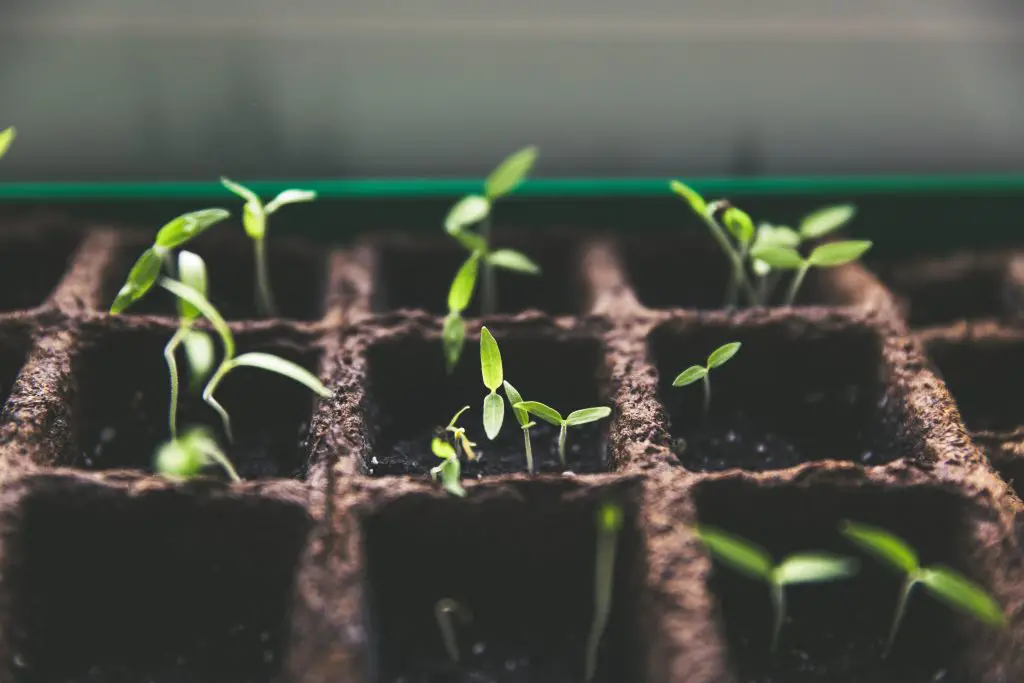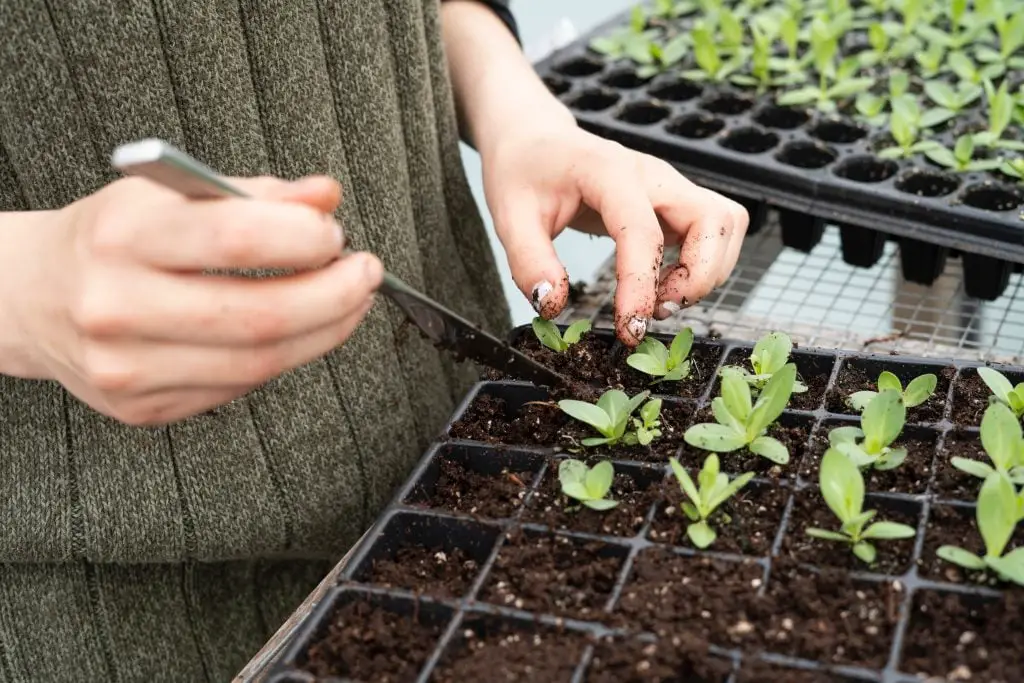Do You Have To Use Seed Starting Mix? The need to purchase seed starting mix (sometimes referred to as seed raising mix) can seem an unnecessary expense to some gardeners, so is it really necessary? What are the benefits?
Specialized seed raising mixtures are not an absolute necessity to successfully germinate seeds however, it does improve the germination and strike rate for seedlings and cuttings. Additionally, using soil from your garden is not recommended as the drainage is not as good and it often contains weed seeds and pathogens that can affect the progress of the seedlings.
Additionally, if you are planting a type of seed that you have not planted before it can be difficult to tell the difference between a weed and the plant you are interested in.
The other alternative for raising seedlings is to use a commercial potting mix which is also sterile and will work, however, it does lack some of the properties of a seed raising mix which makes it less suited to the germination of seeds.

What Is The Difference Between Seed Starting Mix And Potting Mix?
Seed starting mixes differ from Potting mixture because they have a finer texture which improves their ability to come into close contact with the seed. Additionally, the seed starting mixtures tend to have a lighter fluffier texture which is ideal for allowing the roots of young seedlings to penetrate the medium.
This texture is achieved by using ingredients such as ground peat moss, coconut coir fiber to achieve fine texture, and perlite or vermiculite is also often added to help lighten the mixture.
Whereas potting soils tend to have a relatively coarse texture that may contain topsoil, compost, or composted manure in conjunction with vermiculite or perlite to lighten the soil. Additionally, some potting mixes may contain fertilizer and moisture retention additives which increase the mixtures’ capacity to hold water. To learn more about how moisture retention additives perform click here.
This increased water holding capacity makes potting mixtures suitable for use in pots which, can dry out readily. Whereas very high water holding capacity is not necessarily ideal for seeds that can be susceptible to rotting.
Are There Different Types Of Seed Starting And Potting Mixtures?
There are several types of different Potting Mixtures that are formulated differently to meet the needs of specific groups of plants. Modifications typically include water holding capacity (or drainage) and the pH of the mixture. In the area of seed-raising mixtures, there tend to only be general-purpose mixtures that are commercially available but some gardeners do modify the mixes at home themselves.

The types of different potting mixtures that are commercially available are listed below;
- All-Purpose Potting Soil. It is a general mix of ingredients to suit a broad range of plants. It has a moderate degree of drainage and nutrients and would be the most suitable alternative to seed raising mixture. It is broadly available and can also be purchased on Amazon, click here to see the latest price.
- Organic Potting Soil. Can largely be considered equivalent to All-Purpose Potting Soil with the main difference being the source of the material. The ingredients of organic mixtures are sourced from naturally derived products such as worm castings, food compost, and manure. For those wanting to be as organic as possible, this is the way to go. To see the latest price click here to visit Amazon.
- Orchid Potting Soil. As the name suggests is designed specifically for Orchids. Orchids require a growing medium that is extremely free draining and prevents the soil from remaining moist. The mixture is typically extremely coarse and is usually around 80% bark and is really only suitable of Orchids.
- Cacti Potting Soil. Is a mixture that is designed to have additional drainage compared to the all-purpose potting mixture. This is typically achieved by the addition of extra sand. This is suited to Cactus plants that do not require the soil to be constantly moist, though some short water holding capacity is useful to ensure that the plant is able to take some water into its leaves.
- Citrus Potting Soil. This mixture generally has a higher quantity of fertilizer and relatively good drainage as citrus trees are hungry plants.
- Azalea Potting Soil. This mixture is specific designed for acid-loving plants which include Azalea’s Roses and Blueberries. The pH of these types of mixtures is below 6 and usually have water retention additives included in the mixture.
How To Make Your Own Seed Raising Mixture?
The alternative to purchasing seed raising mix is to make your own. There are a number of recipes but the simplest one that I have found is the 2 ingredient one on afarmofyourown.com.
The two ingredients are Coir Fibre and Vermiculite which are blended in a one-to-one ratio. The Coir fiber is normally purchased as a dehydrated brick that needs to be hydrated ready for use. Once hydrated they can be blended one to one with the vermiculite. Both the vermiculite and Coir blocks can be purchased online at Amazon by clicking on the links.
A one-pound Coir block will expand to around 8 to 9 quart (litres), so purchasing one 8QT packet of Vermiculite and a 1 pound block of coir will produce approximately 16 quarts of seed-raising mix.
An alternate formula recommended by Gardening Australia contains the following ingredients:
2 parts compost
2 parts coir peat
1 part sand
The compost used in this needs to be relatively fine, to create this texture it is best to sieve the material before adding it. It is recommended that commercial compost be used unless you have a hot compost heap. The reason for this is that cold compost will contain weeds seeds, however, if the temperature of your compost heap reaches around 140°F (60°C) it kill most seeds.
If you are planning to use home compost it is advisable to purchase a compost thermometer to ensure those temperatures are reached. Click here to see the latest price on Amazon.
